Admont, a quiet village
7:00 am the alarm clock rings, painfully early after a short night in the youth hostel in Graz. The 10:40 train ride of the day before is also felt, and I’m about to undertake a short 2-hour journey to the centre of Austria, to discover a timeless place.
A surprising place that was the main reason for my trip to Austria in the summer of 2021. I will take you to Admont, a small Austrian municipality located in Styria (whose capital is Graz).
The town of Admont has no particular signs of beauty apart from having an important heritage. It is a holiday resort for visitors wishing to hike in the Enns valley and the Gesäuse mountains (a national park has been established here). It is also a place known for its youth hostel, the JUFA Schloss Röthelstein, which is housed in a baroque castle 5 kilometres from the centre of the town. I was initially inclined to stay there but preferred to backpack to Graz for two nights to explore Austria’s second-largest city.
However, if Admont comes alive during the day, it is to welcome the many visitors who come to discover the Benedictine abbey and its phenomenal and incredible library. Yes, I travelled more than 10 hours by train from Switzerland, with the main purpose of admiring a library. But then what a library!

Austria has dozens of abbeys, the most famous of which is Melk. I will also discover during this trip the one of St. Florian, located about ten kilometres from Linz, in order to discover its impressive library which can only be admired on a guided tour (another story which is told here).
So when I arrived in Admont, the Benedictine abbey did not offer any outward signs of splendour. However, the church is imposing, and quietness reigns under the blows of 10 am. The tourist influence has not yet arrived. However, I don’t take advantage of the beautifully landscaped park and head straight for the admissions, wanting to enjoy the library with as few people as possible. I had also set this time of arrival, primarily based on public transport connections, but mainly to take part in the free guided tour at 11:00. The tour is exclusively in German and lasts about 40 minutes. Naturally, I won’t understand half of what is said, but it helps to decipher certain architectural aspects as well as the rich history of the place.
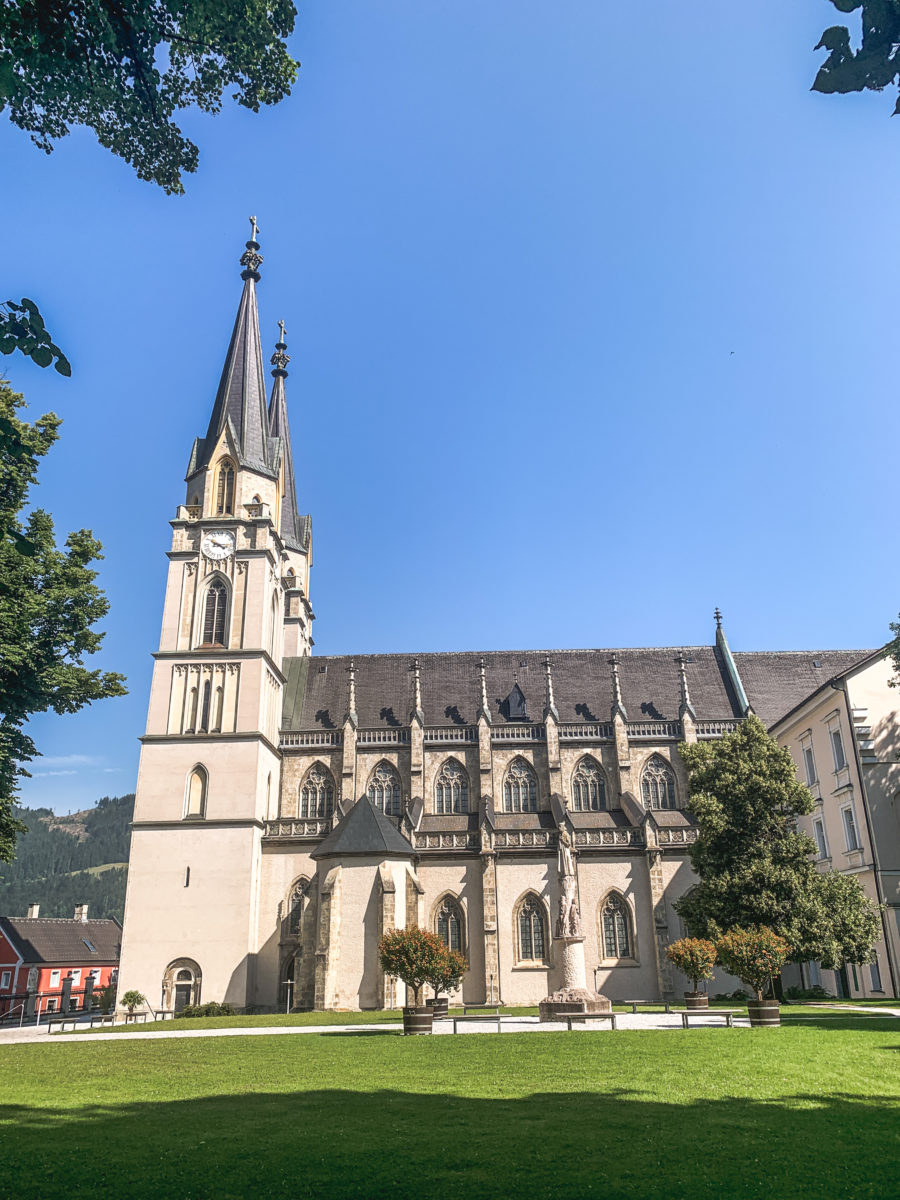


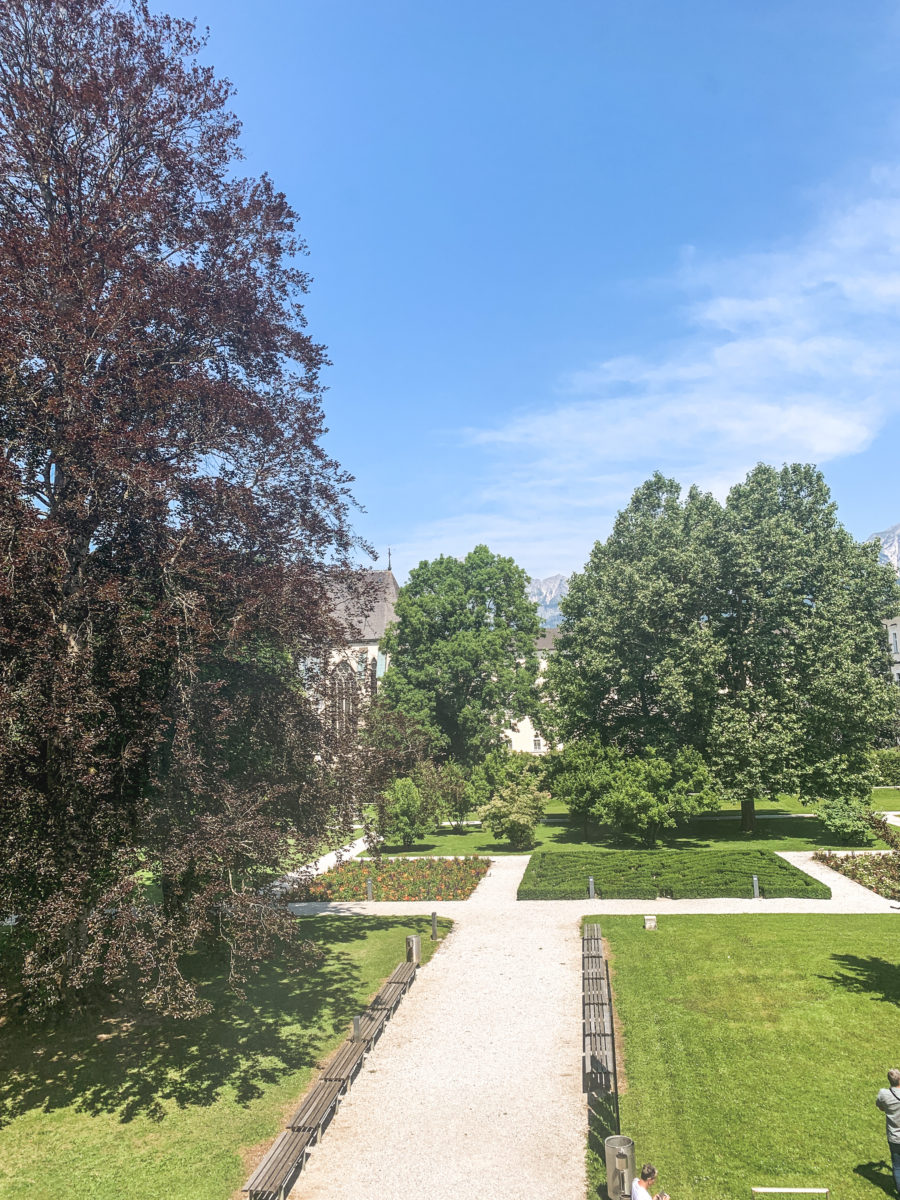
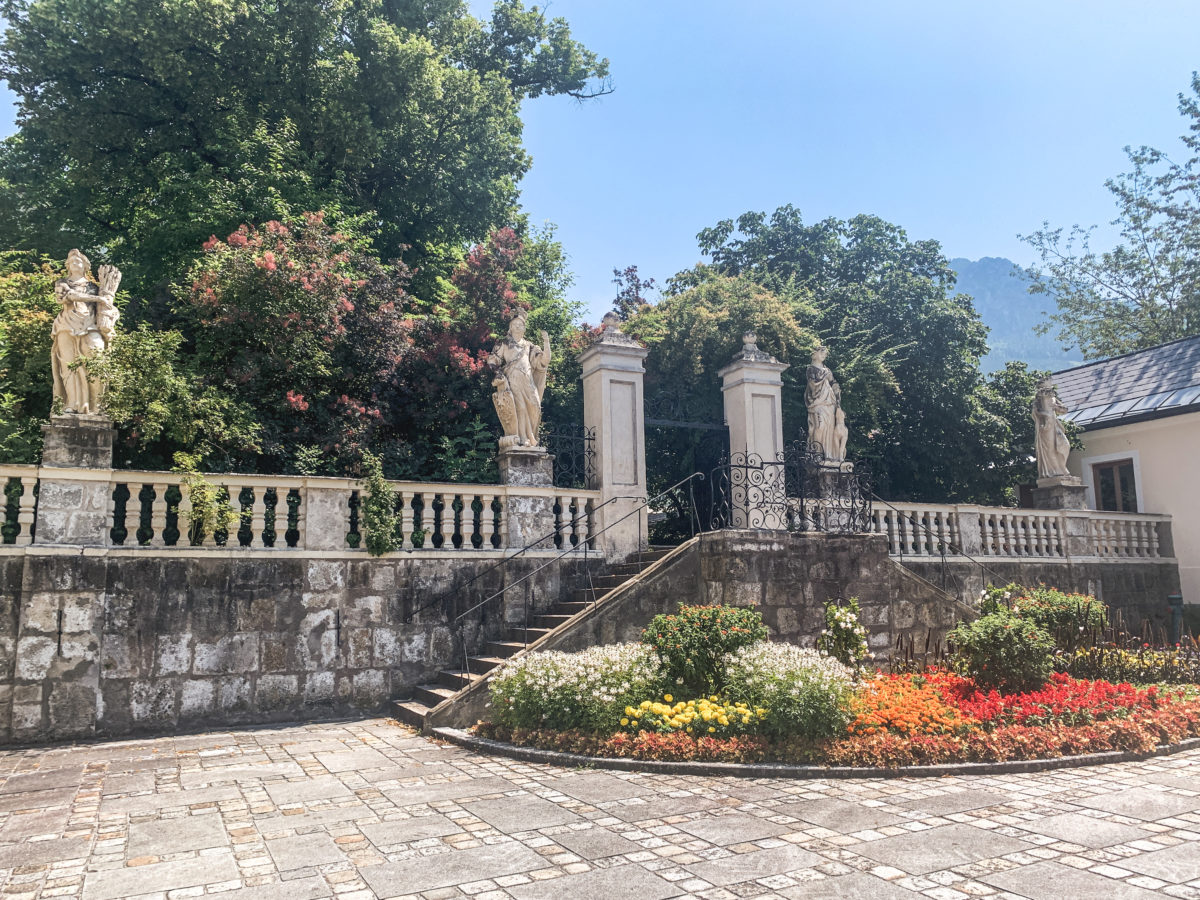
Admission costs 12.50 Euros for an adult and 7.50 Euros if you are a student (upon presentation of a valid card). Other prices for various other categories are available here for your information.
The library as a symbol of prominence and knowledge
I shudder with excitement as I make my way to the first floor and arrive at the huge door behind which the abbey’s treasure is revealed. Opening it, I am amazed by what I see. Bathed in a refreshing light, for about thirty minutes I try to discover all the secrets contained in the library of Admont Abbey. My eyes cannot rest in front of all the subtleties that it has been storing for over 300 years. It is, in fact, the largest monastic library in the world. Only that is impressive.
And my god, it is so resplendent (yes, I swore a lot in front of so much splendour!). From one painting to the next, from one shelf to the next, I am dazzled by the pastel and white colours that give the library its brightness (helped by the 48 windows that illuminate the room). I could go on and on about the beauty of the place and my impressions of it, but I’d rather give you some explanations of what you’ll see in the pictures.


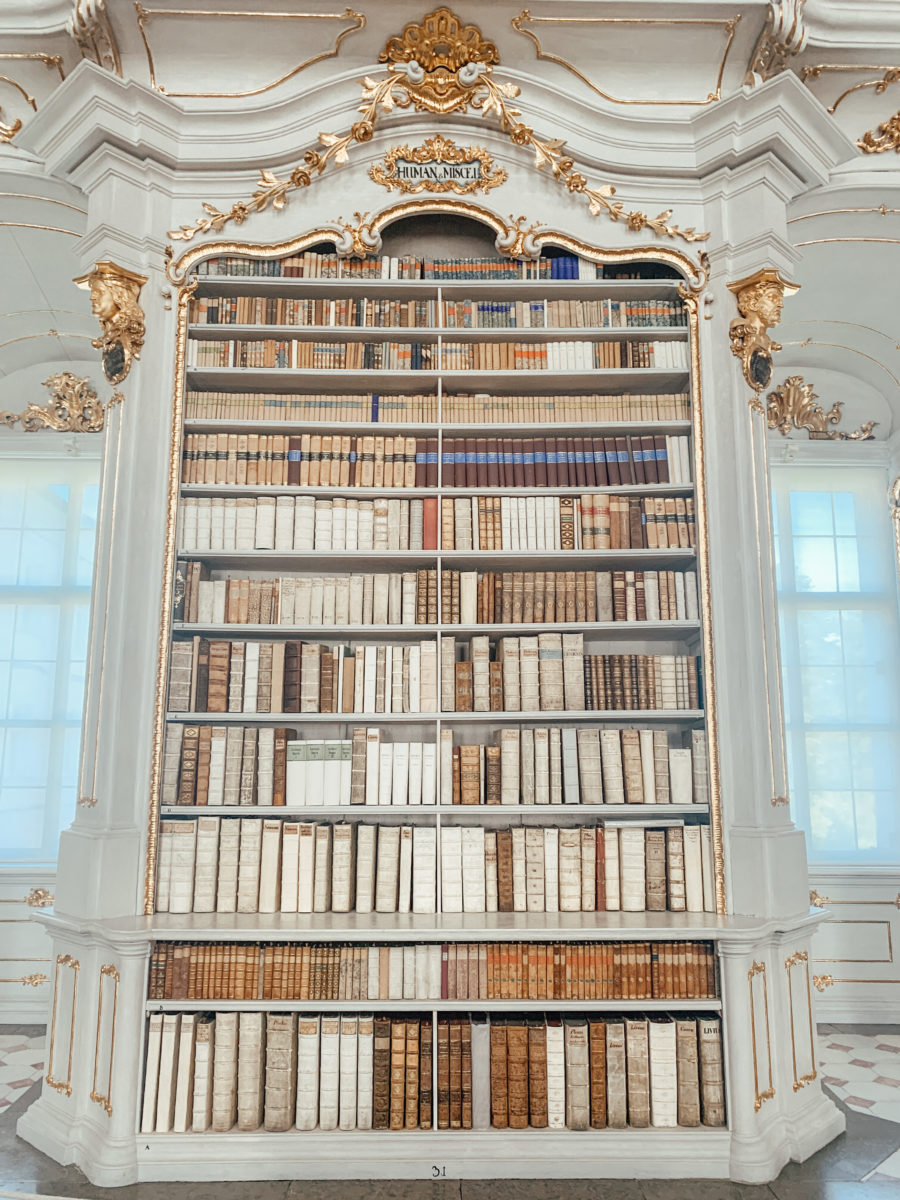








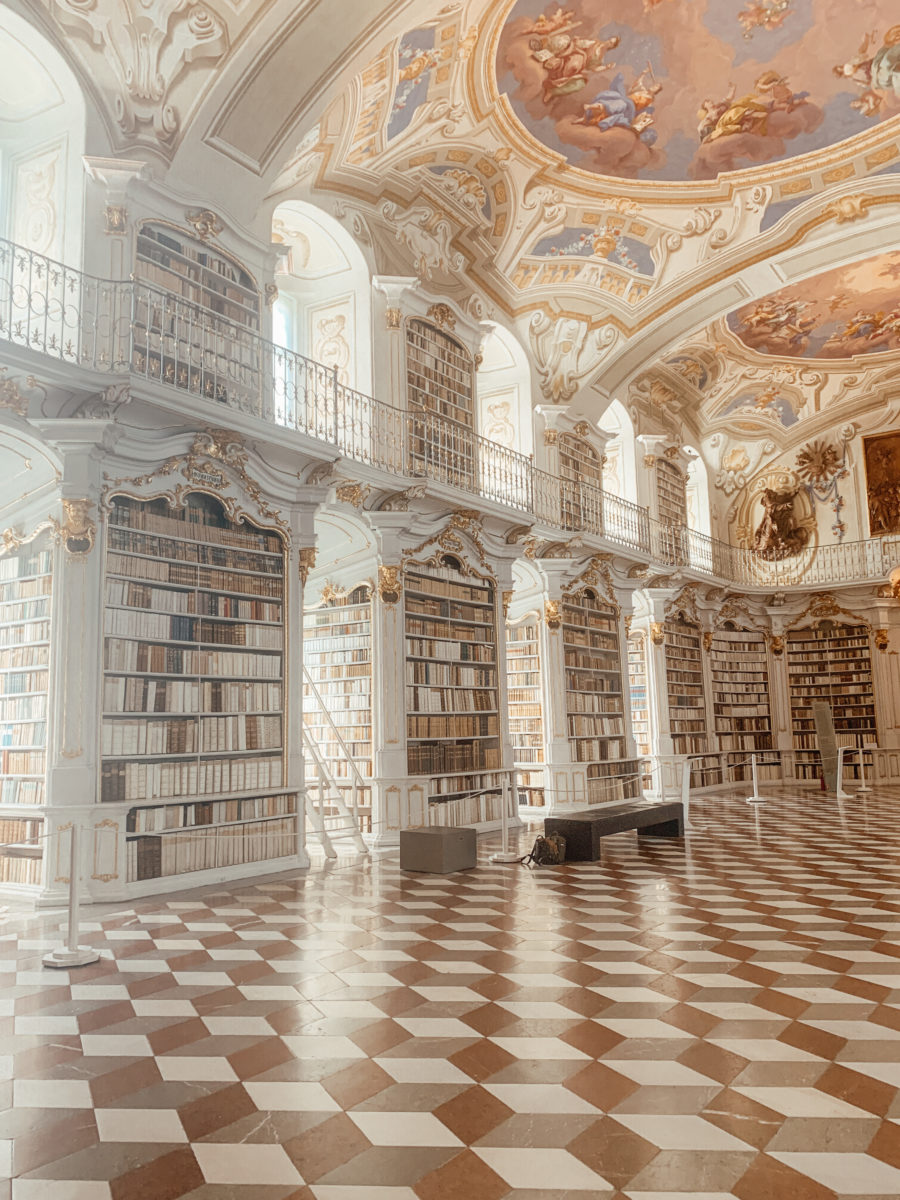



Completed in 1776, the sumptuous library is in the Rococo style and was completely renovated in the early 2000s. In addition to the many important works it offers, the library is also impressive for its enormous dimensions: 70 metres long, 11 metres high (12.7 metres in the central dome) and 14 metres wide.



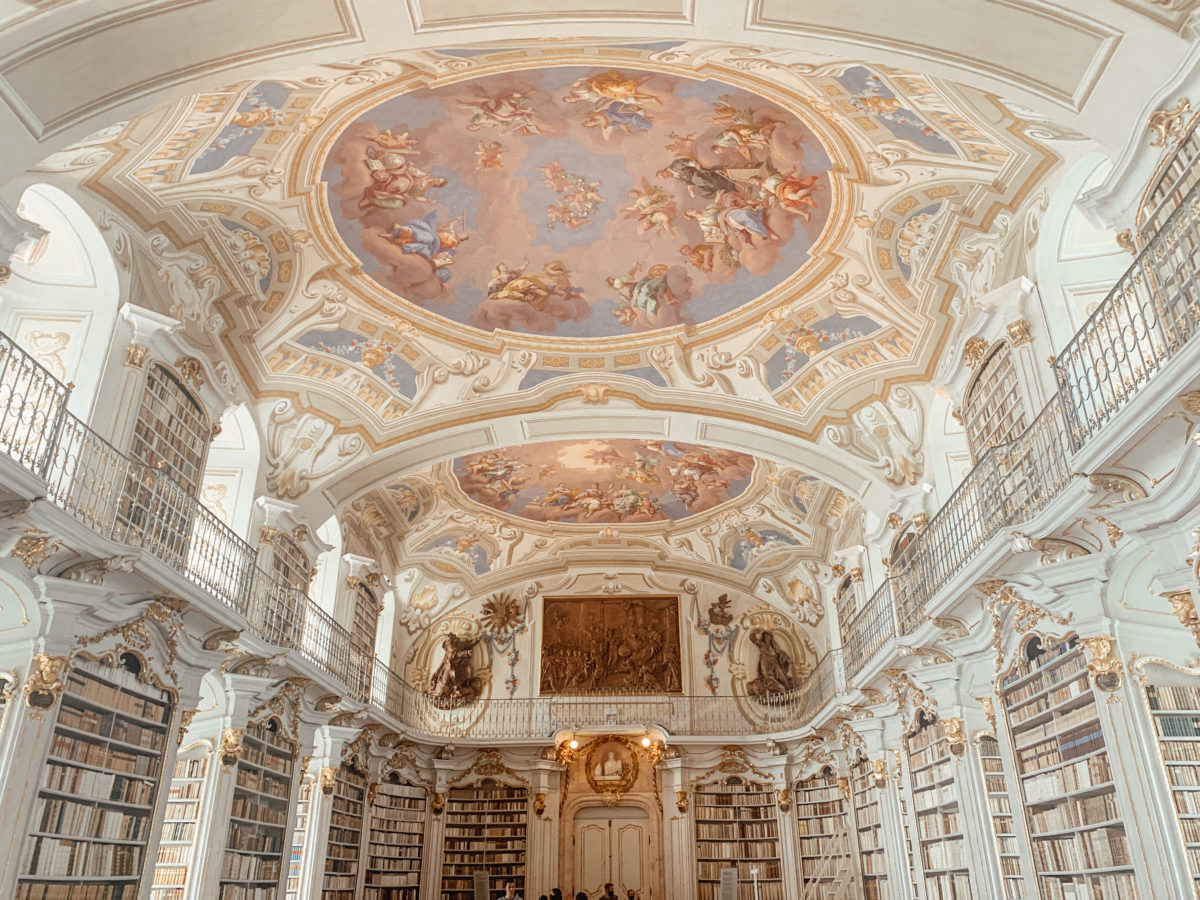

I immediately notice the magnificent frescoes. The cycle of frescoes in the seven vaulted domes was created by Bartolomeo Altomonte (1694-1783). The Austrian painter undertook this work when he was already 80 years old and was able to achieve it in the summer months of 1775 and 1776. He was also responsible for the St. Florian paintings. As a great advocate of the allegorical Baroque genre rather than the Rococo, the basic theme of this seven-part cycle of paintings considers the intimate connection between religion and the arts and sciences. And it sometimes gives rise to somewhat whimsical scenes or to interpretations that differ (notably those I imagine with the painting of the handcuffs).
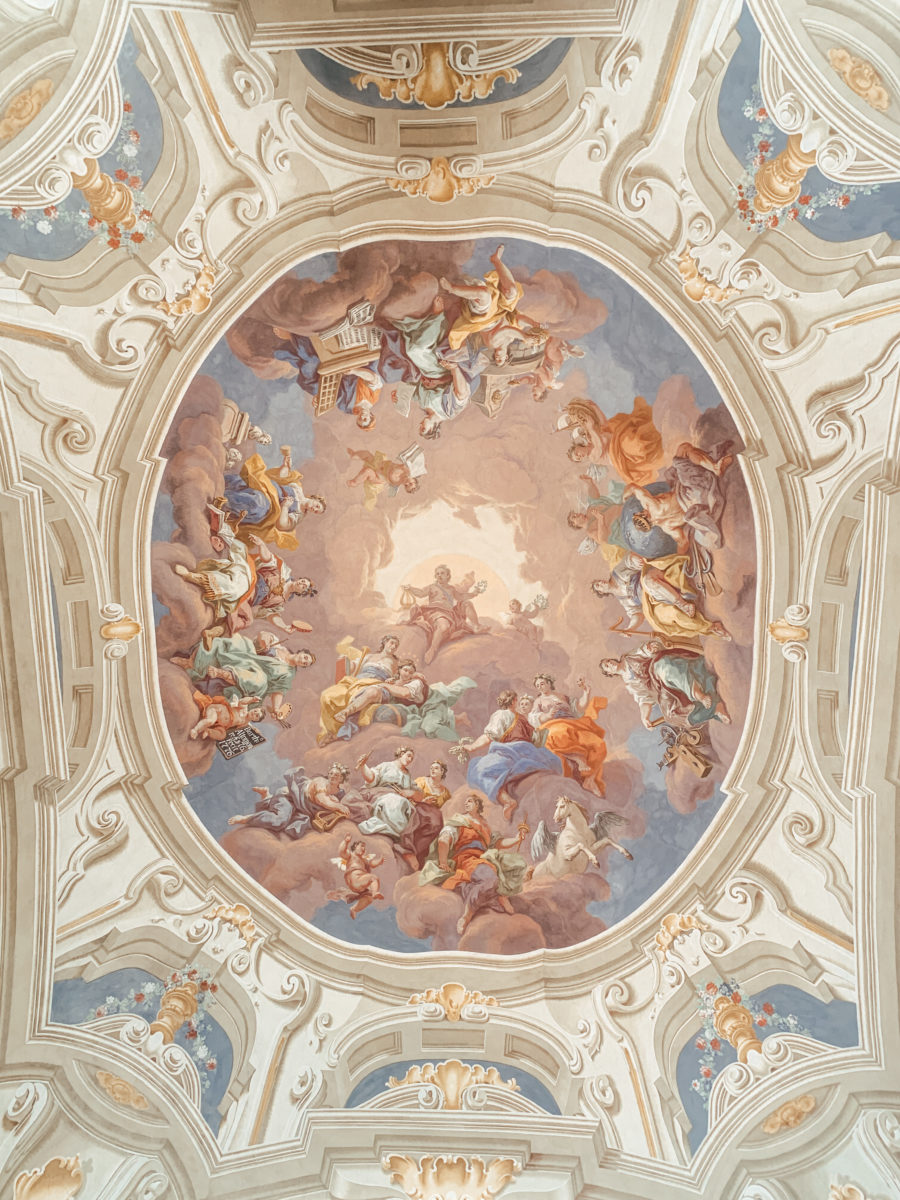
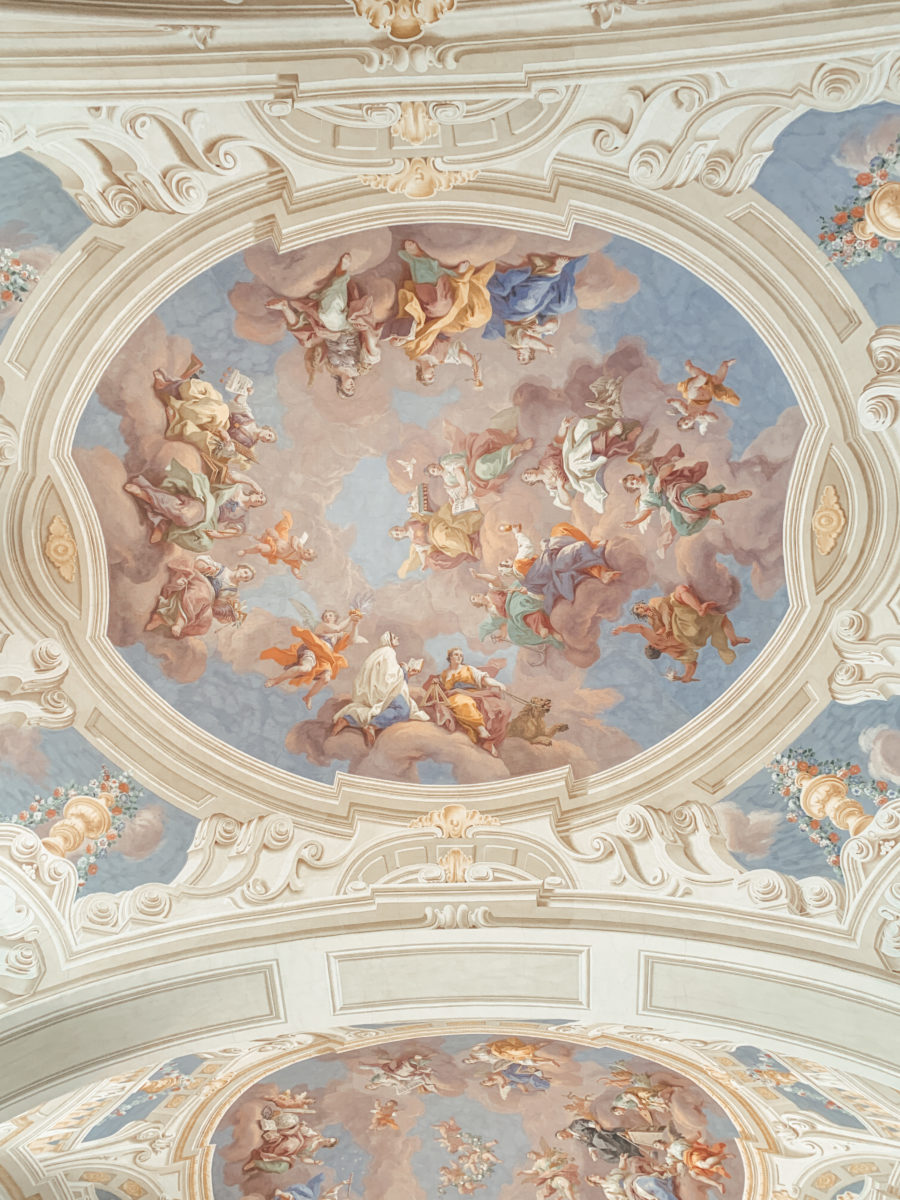

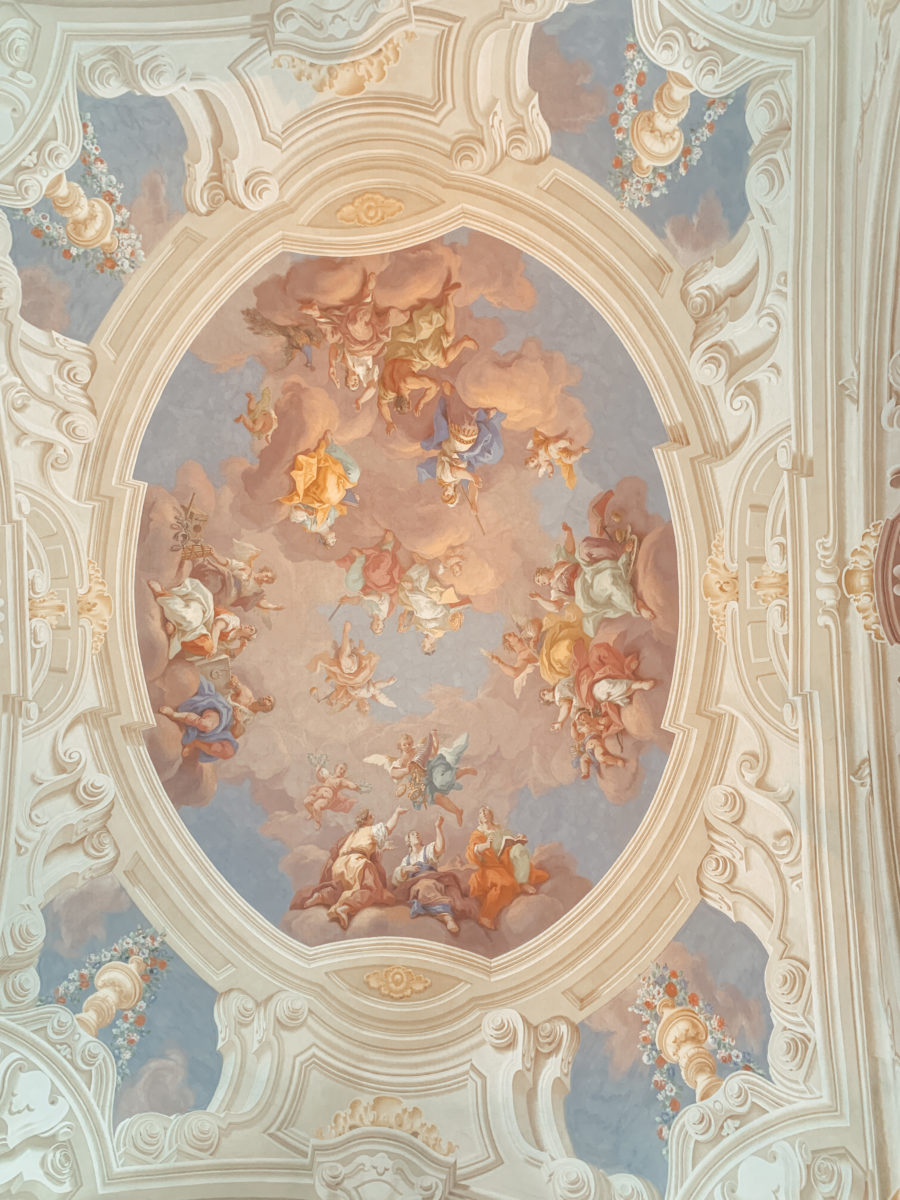

In addition, the library houses 16 sculptures and two large reliefs of Josef Stammel (1695-1765) as well as 68 busts (60 of them representing scholars, artists, poets, sculptors and sybils) made by him from lime wood. His works are in tension with the rest of the design of the Admont library hall, which is characterized by the spirit of the Enlightenment. Except for the gilded busts, they are bronzed and thus create a material illusion. The floor is made of chequerboard marble. It is dotted with sculptures depicting the Four Last Things: Death, Judgement Day, Paradise and Hell.




It contains about 200,000 volumes, including 1,400 manuscripts made from the 8th century onwards and which obey the Rule of St Benedict (you may remember that I mentioned this here).
The whole of these forms a magnificent ensemble of knowledge and aesthetics. Indeed, the interaction of its enormous dimensions, its architectural structure, its collection of books and its artistic furnishings has a timeless, breathtaking scope. It is no coincidence that in the past, the hall was commonly referred to as the “eighth wonder of the world”. And it also houses some rarities, such as Martin Luther’s Bible and the original Encyclopaedia by Diderot and d’Alembert.
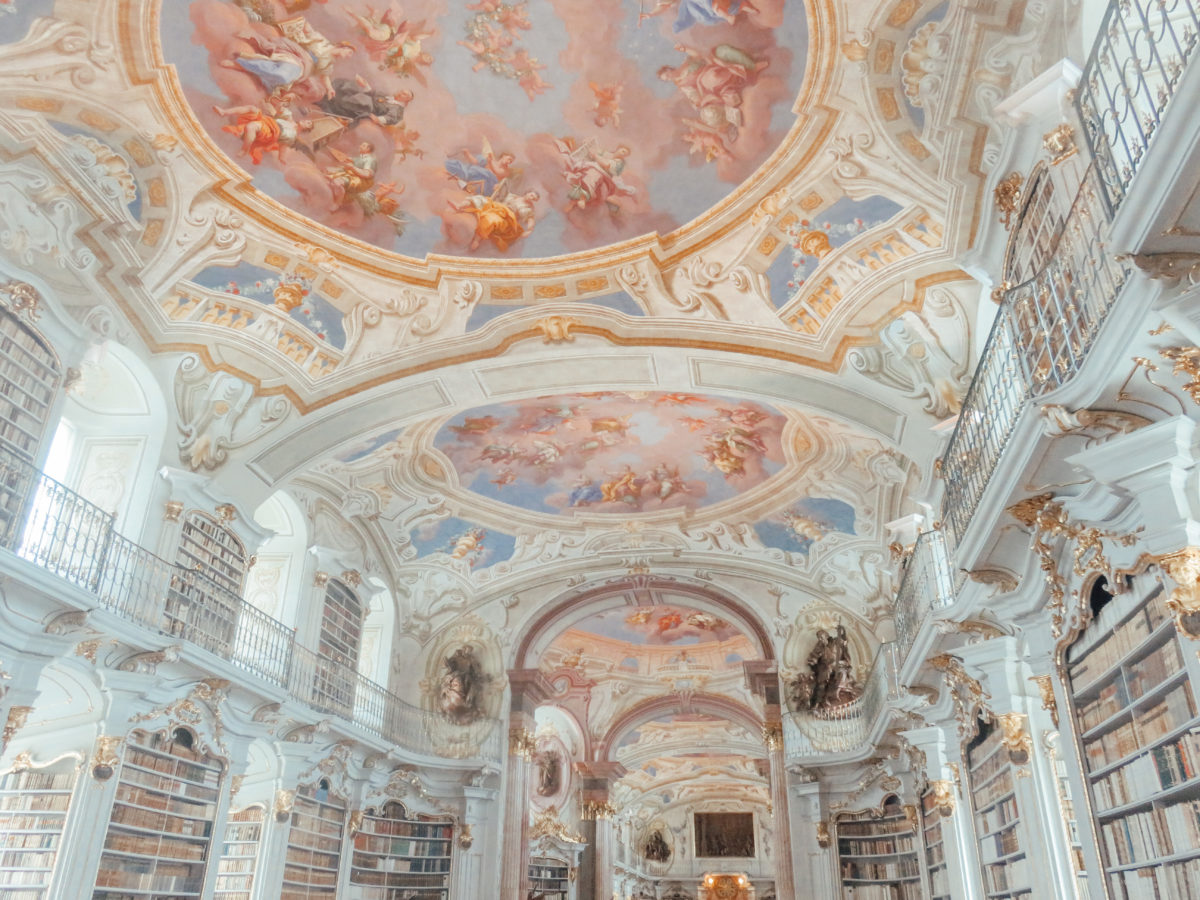
During the visit, I learn that it survived a terrible fire that ravaged the abbey and the village of Admont in 1865. A real miracle. The abbey was subsequently rebuilt, and only the library remains authentic. The library has also seen other dark historical events, such as the visit of the Nazis during the Second World War.
Rich in volumes on history and various researches related to medicine, they had not hesitated to plunder the library for their own research on eugenics (Wikipedia definition: “the set of methods and practices aiming to select individuals from a population on the basis of their genetic heritage and to eliminate individuals who do not fit into a predefined selection framework”). There were about 2,000 books stolen, and only after the Nazi era was their return established.

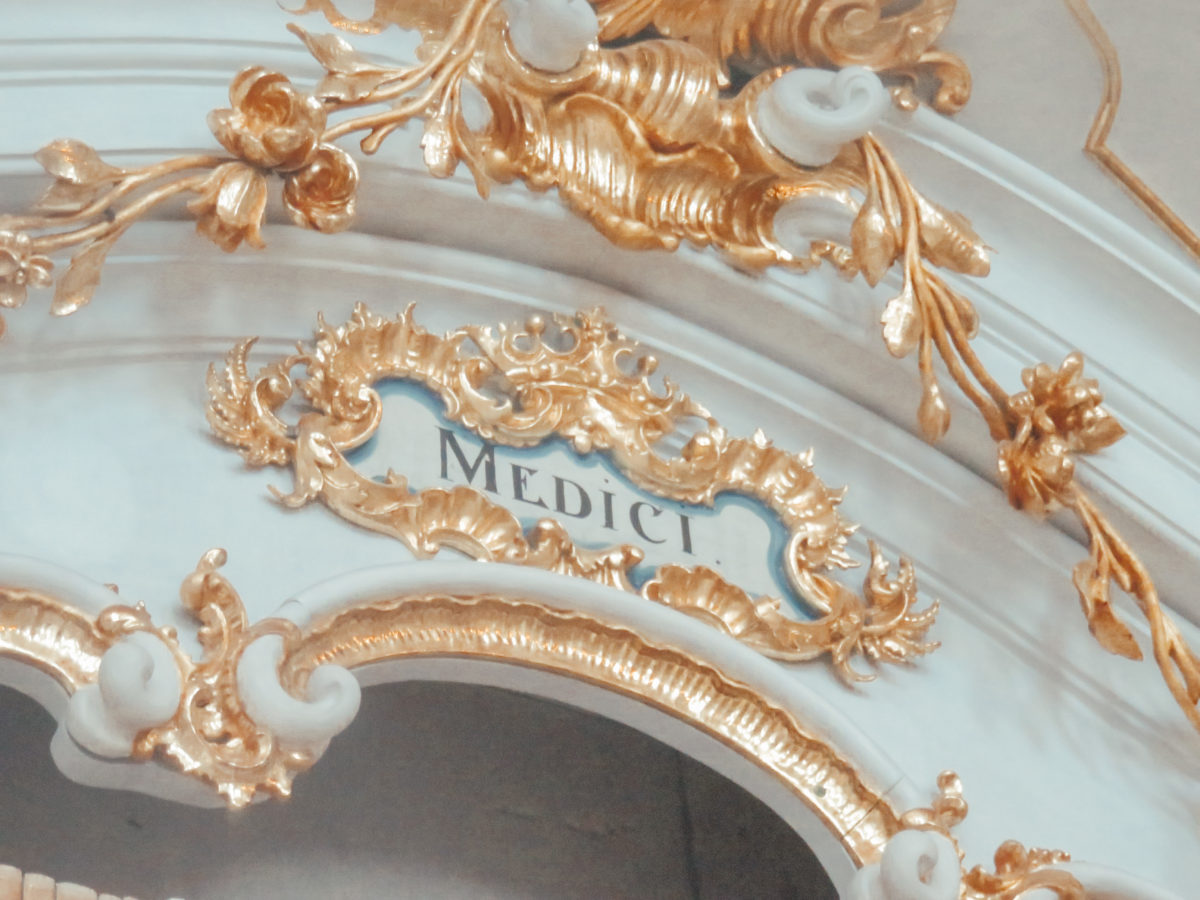
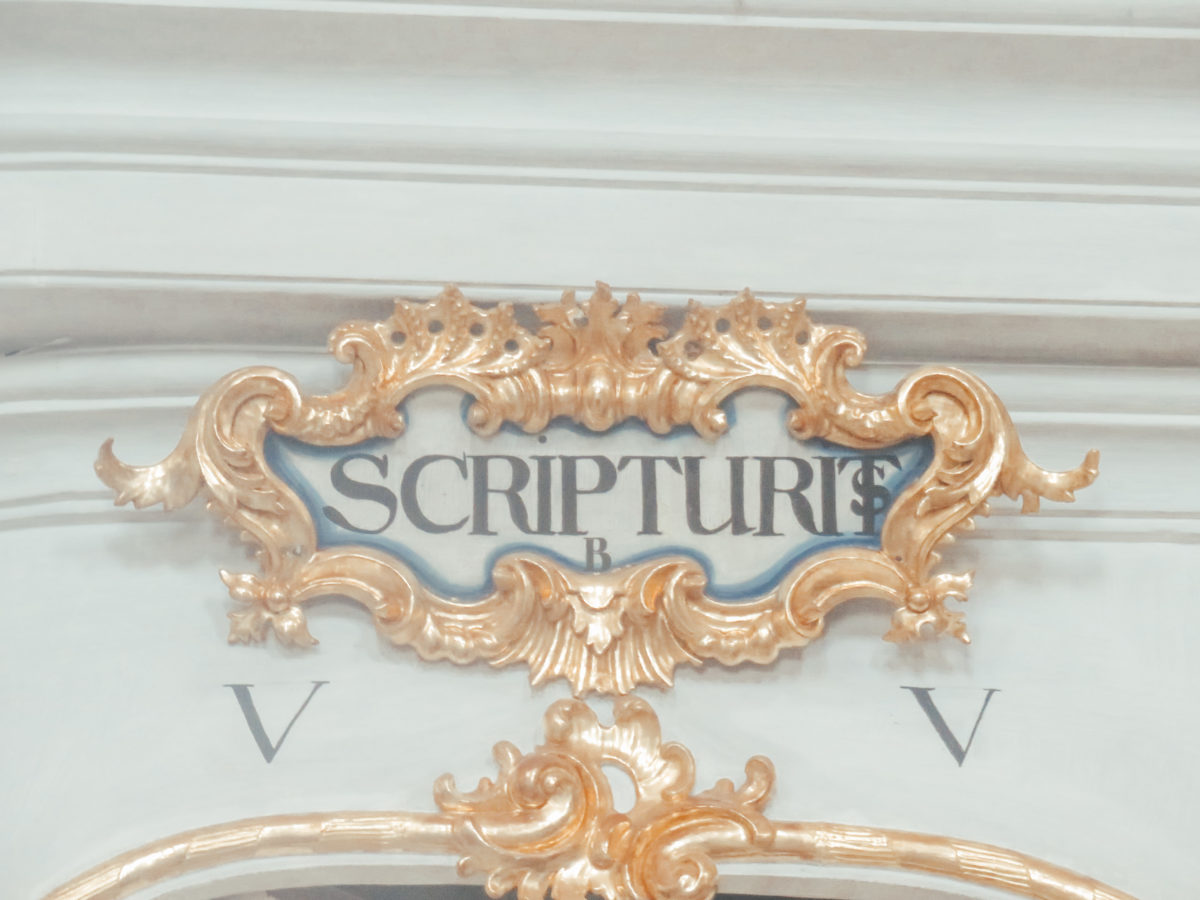
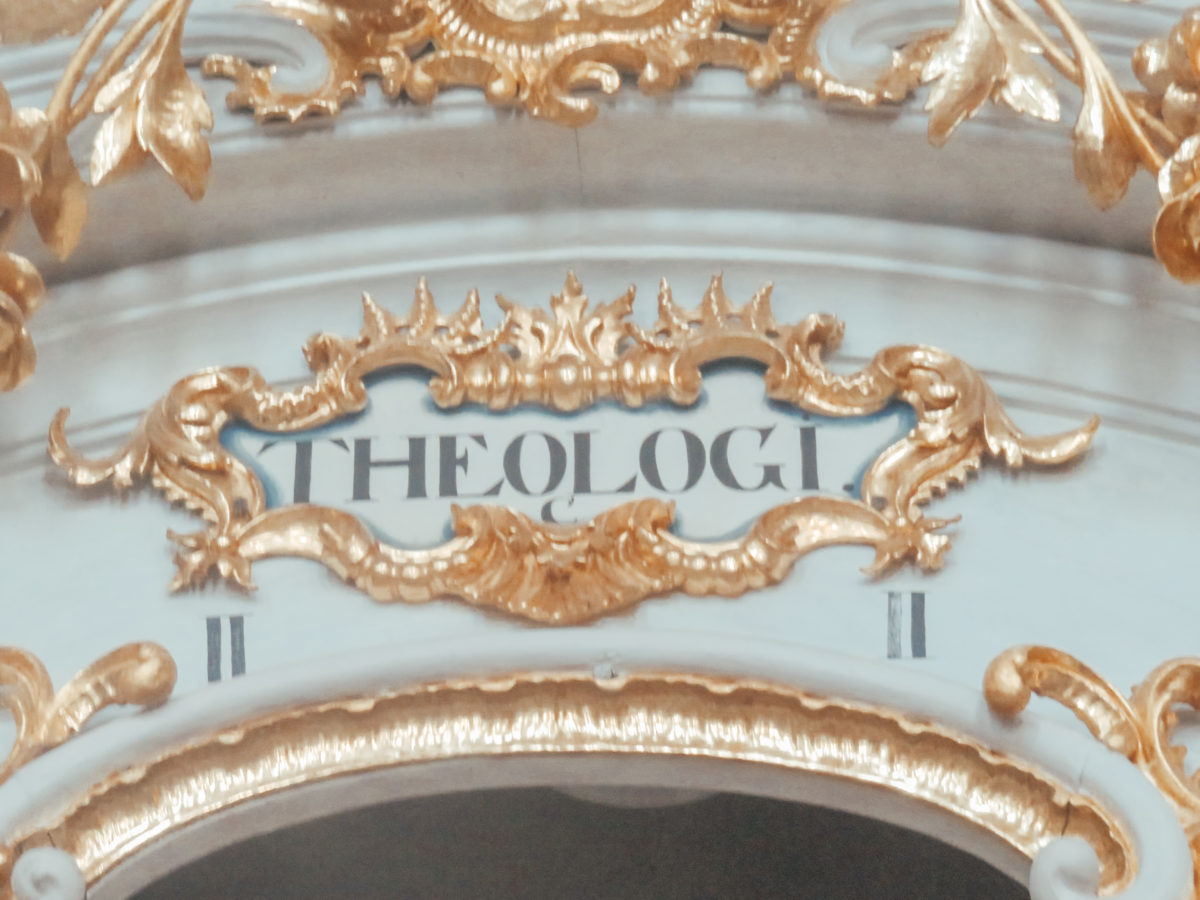
Observing the shelves filled with the different sections (medicine, philosophy, theology, etc.), I realize how important these books are and how they help us to understand historical aspects. Their value is priceless and this is one of the reasons why I like to discover these libraries, whether they are monastic or not.



Discovering the abbey
I leave the library, dazzled but galvanized by the opportunity to have discovered such an amazing place. I then head for the other places to visit, included in the entrance fee. Indeed, founded in 1074, the abbey also houses 4 museums, including one for art and one for natural history, which gathers the second most important insect collection in Austria. To be honest, I didn’t expect to find this in the abbey at all, nor a more technological aspect with some exhibitions. Don’t hesitate to continue your visit after your discovery of the library, you will encounter unusual and varied exhibitions.
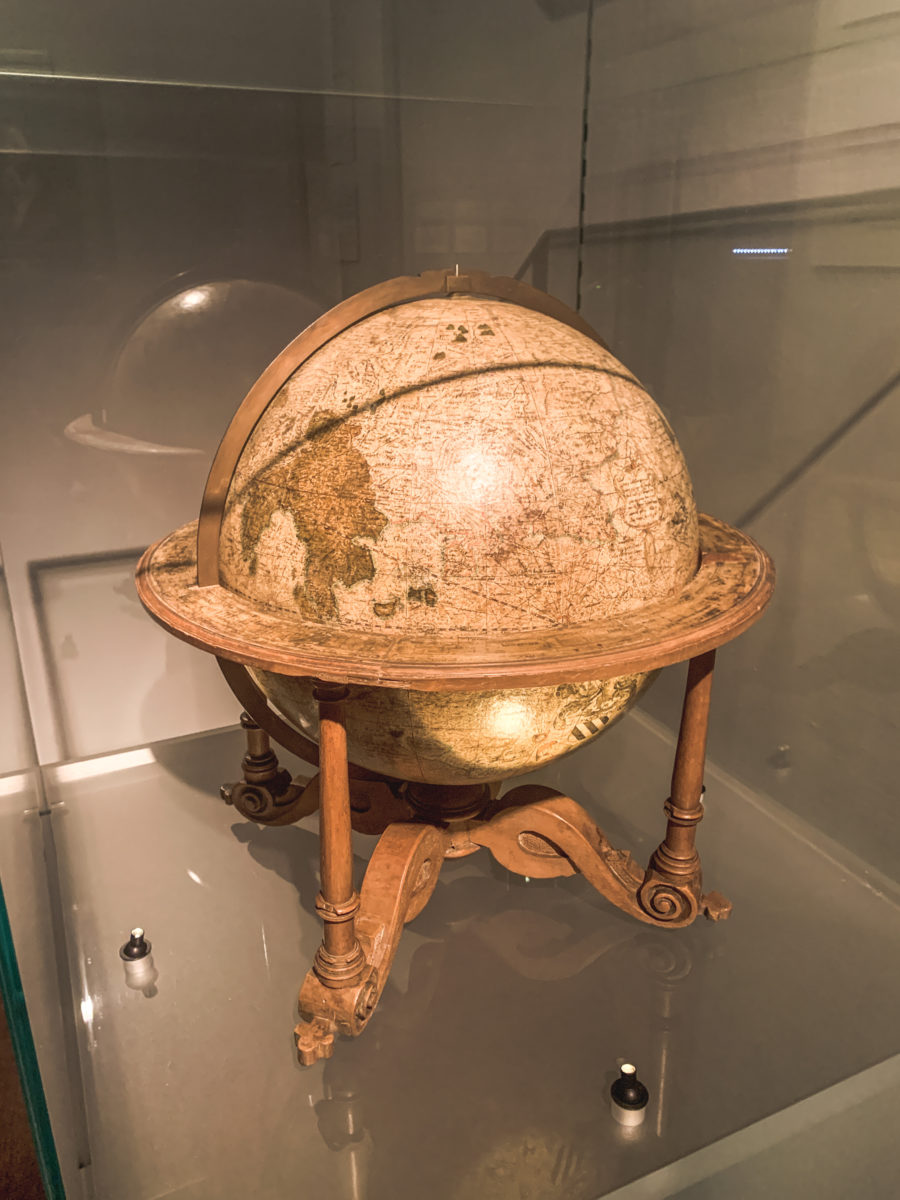
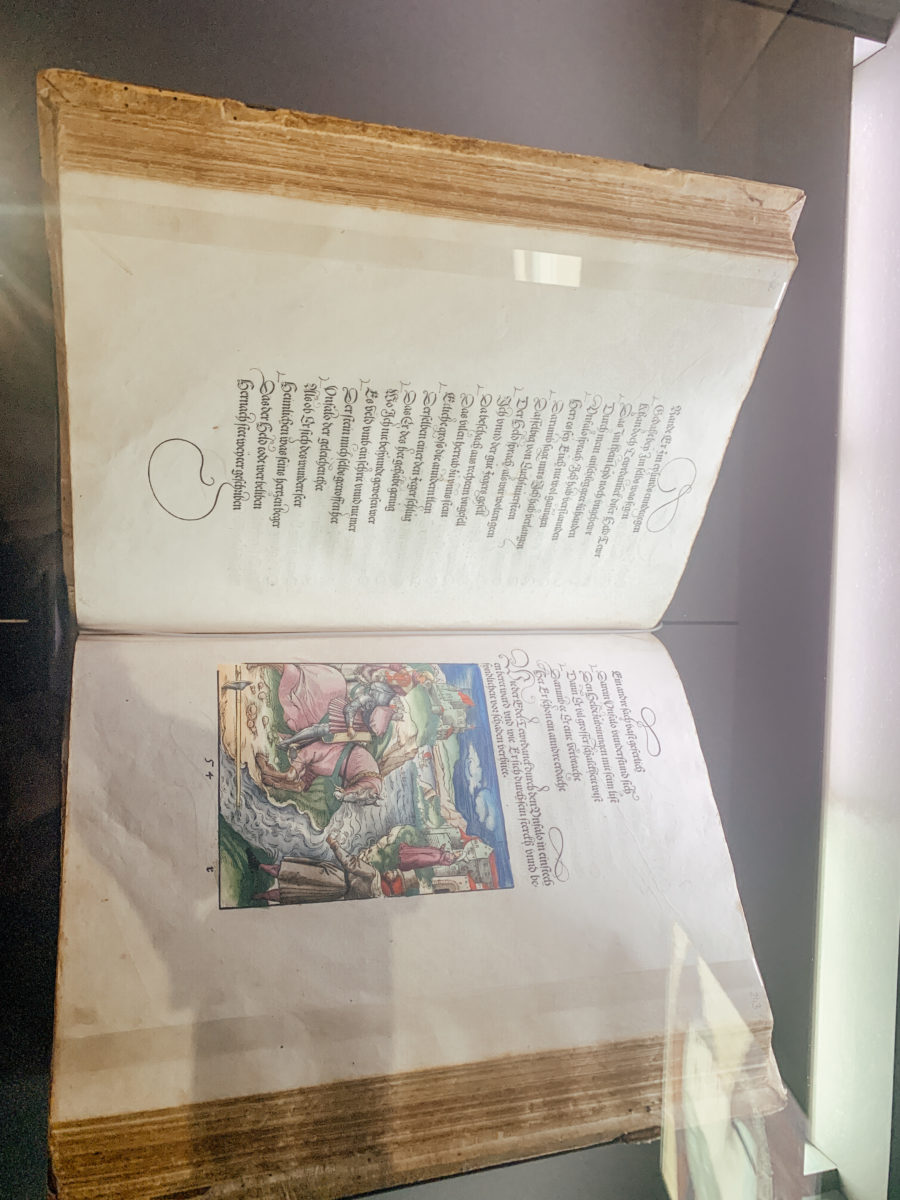
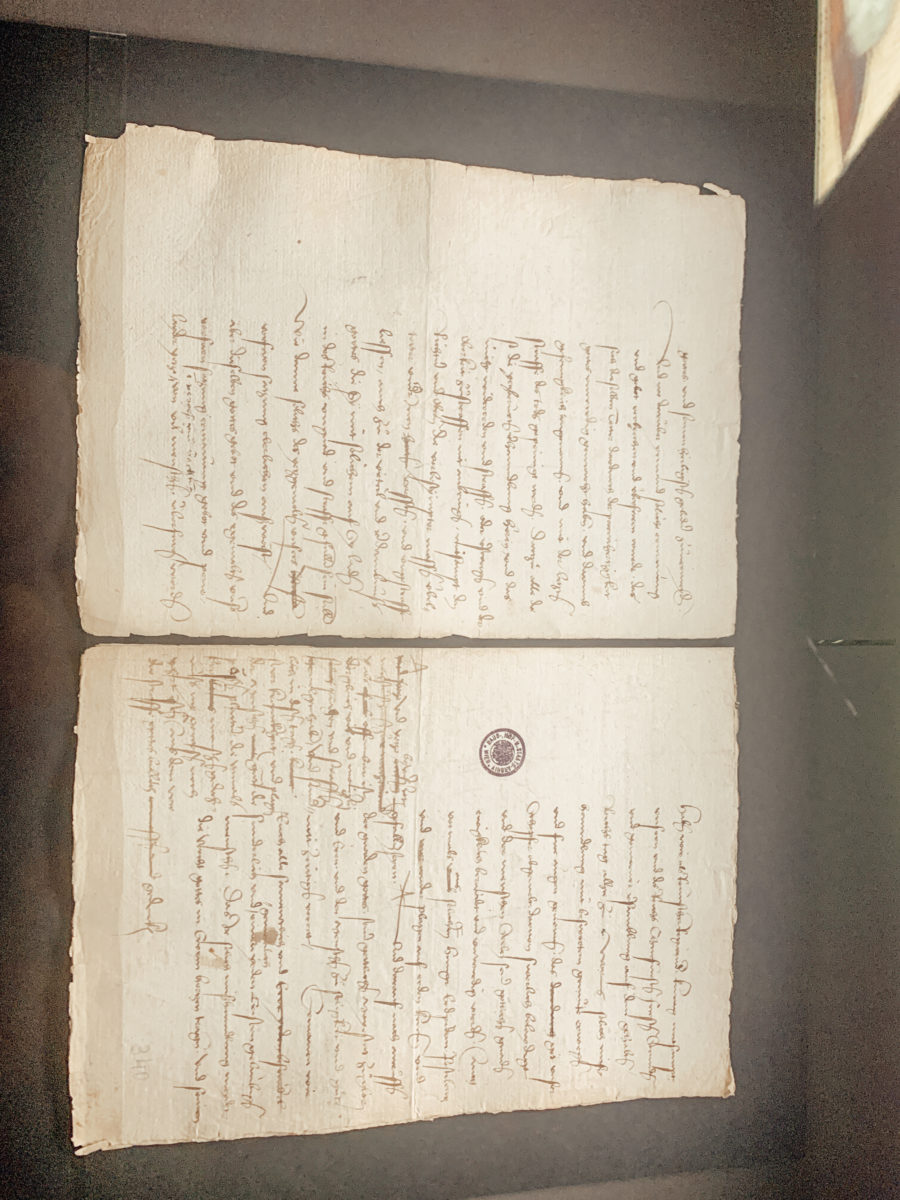
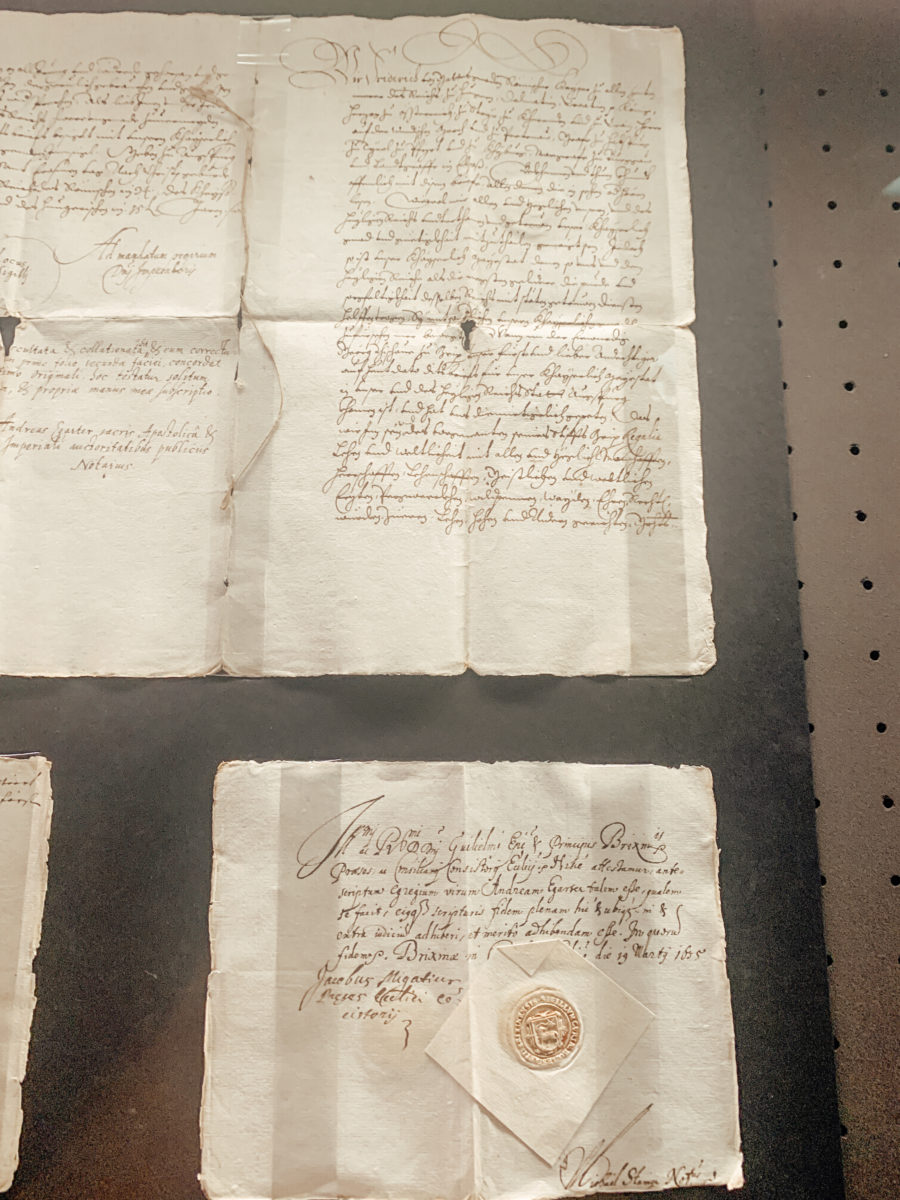


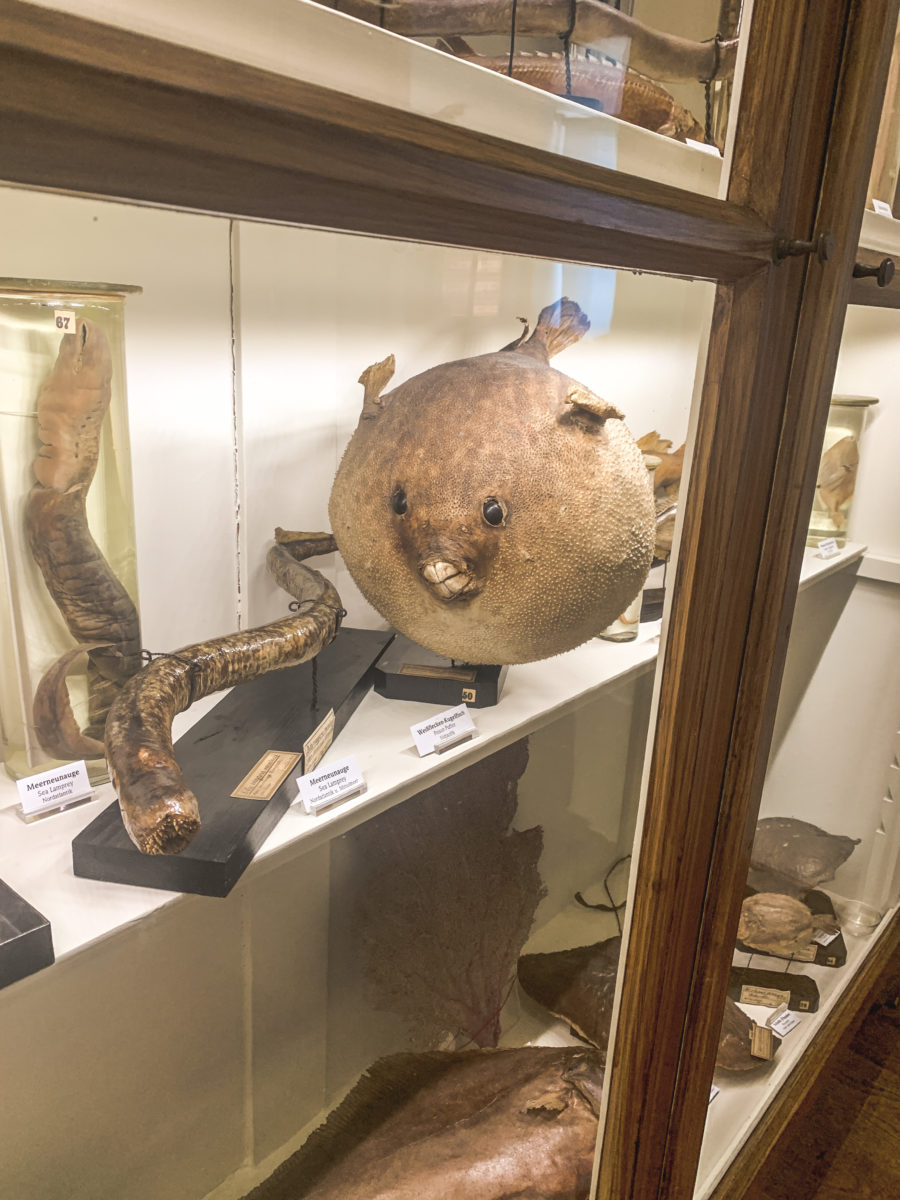
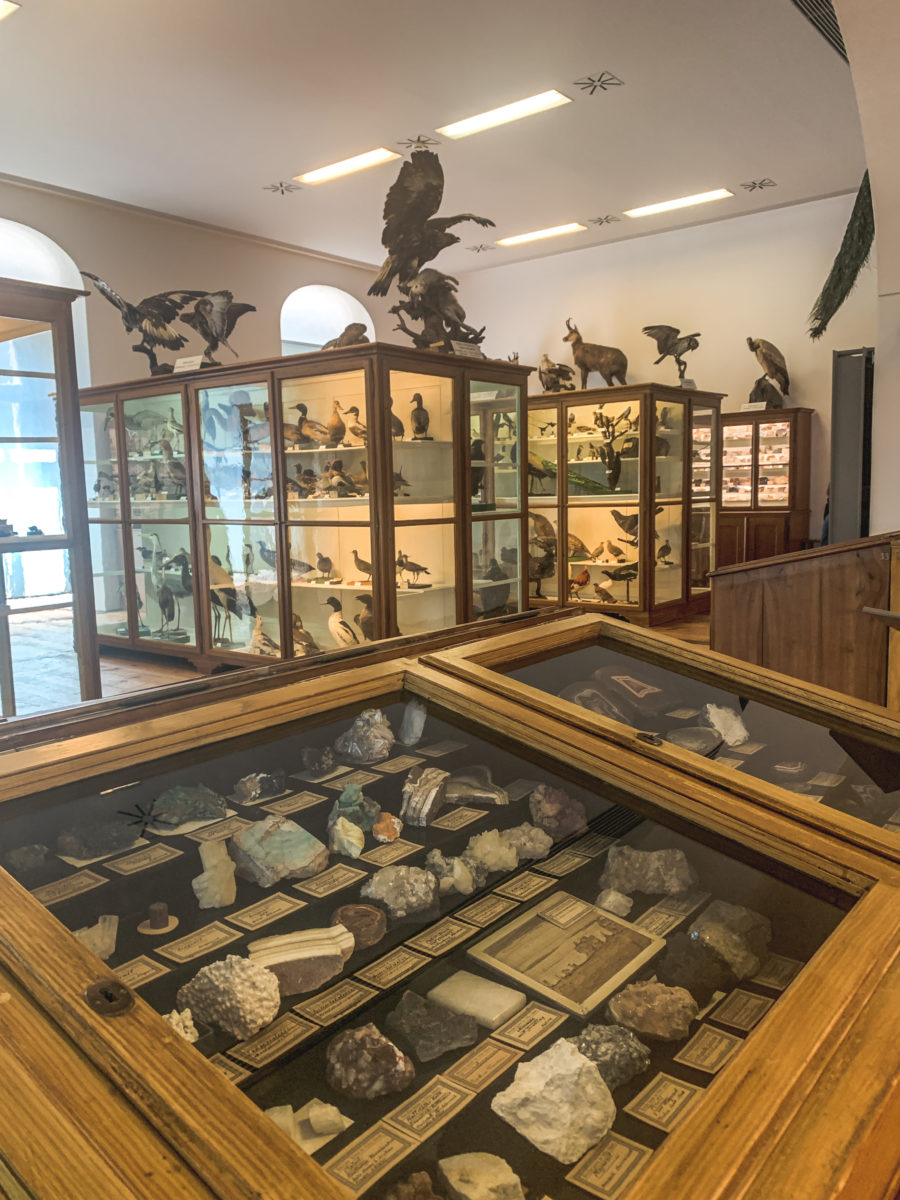
Finally, having to wait for the bus, I went to rest for a few dozen minutes in the outdoor park, on a bench, in the shade. Surrounded by ducks, I observe the calm of the pond and above all the background of this landscape worthy of a painting by the French impressionist painter Claude Monet, with the majestic mountains on the horizon and the water lilies in the foreground. A perfect way to end a day in Admont.
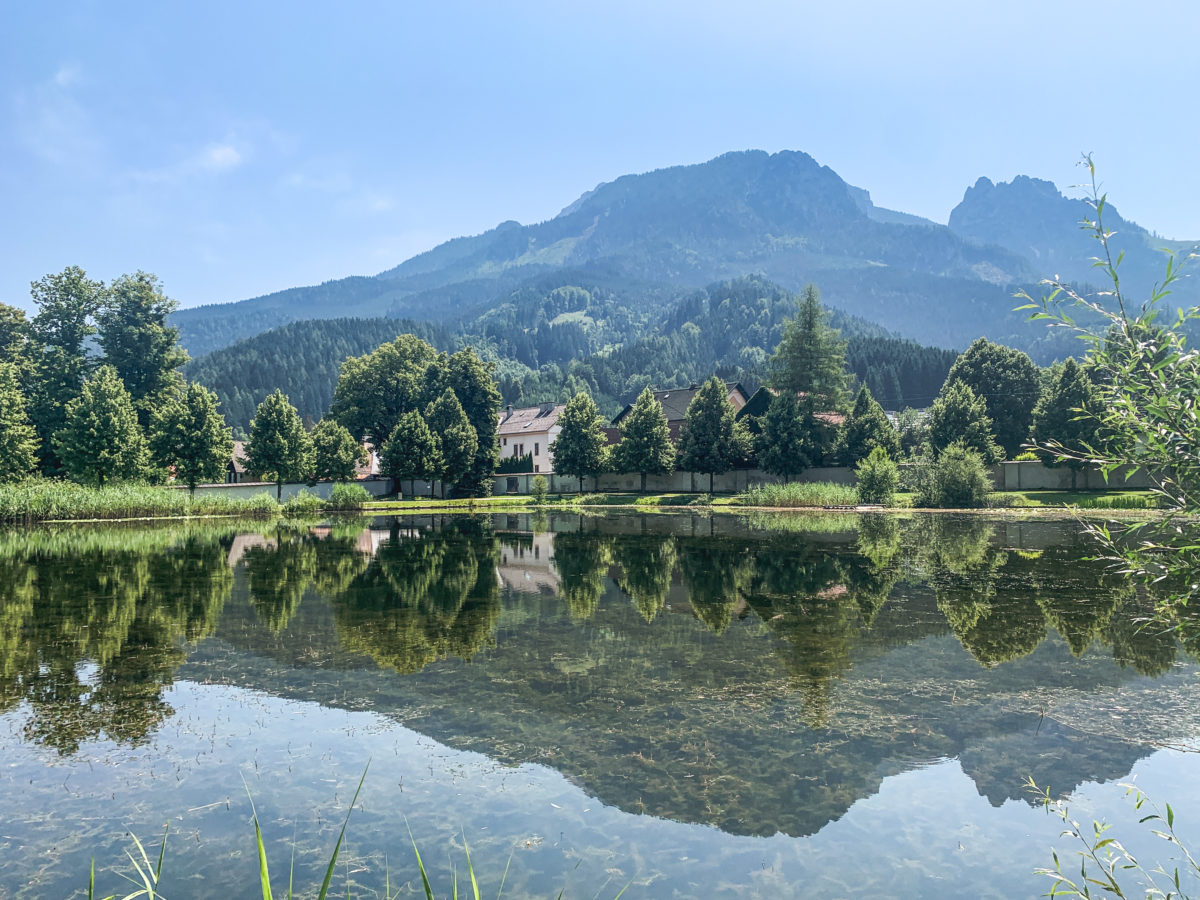

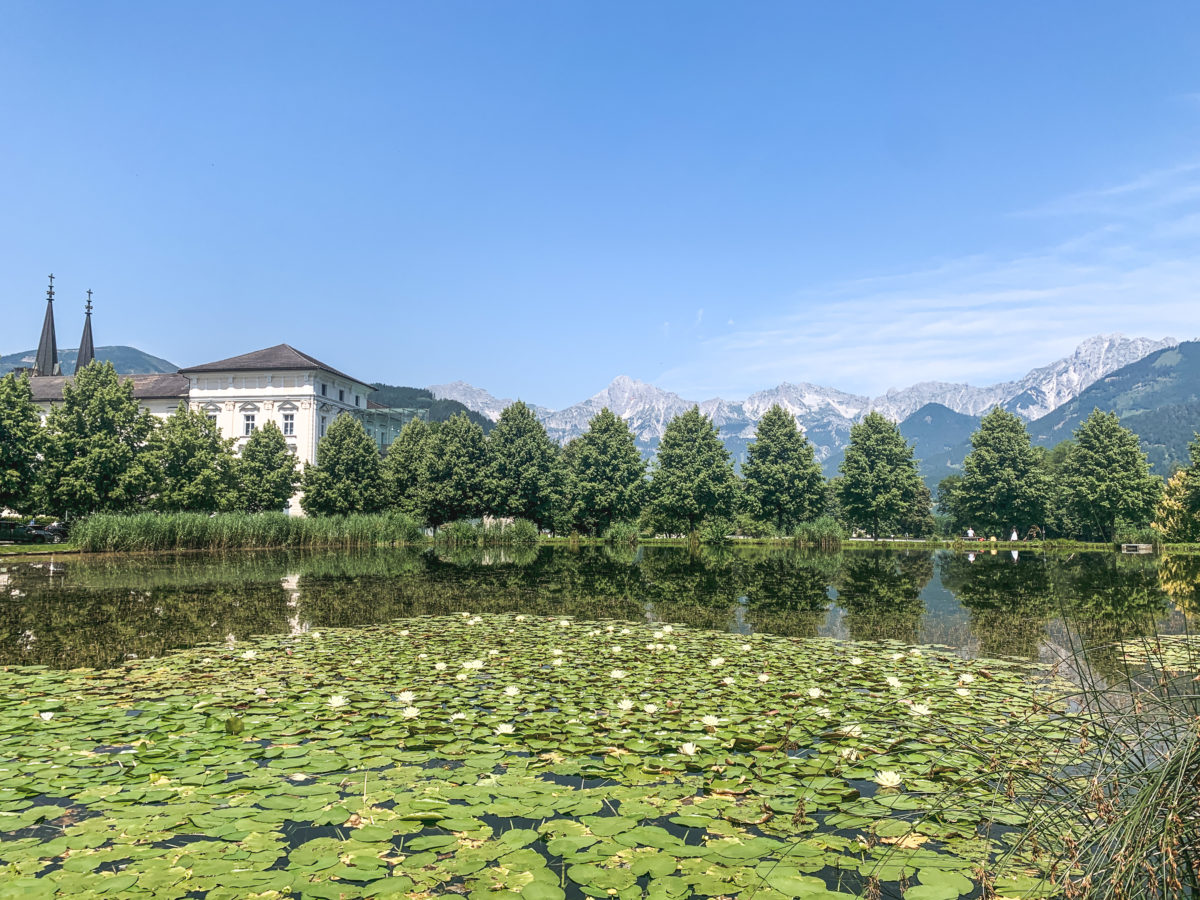
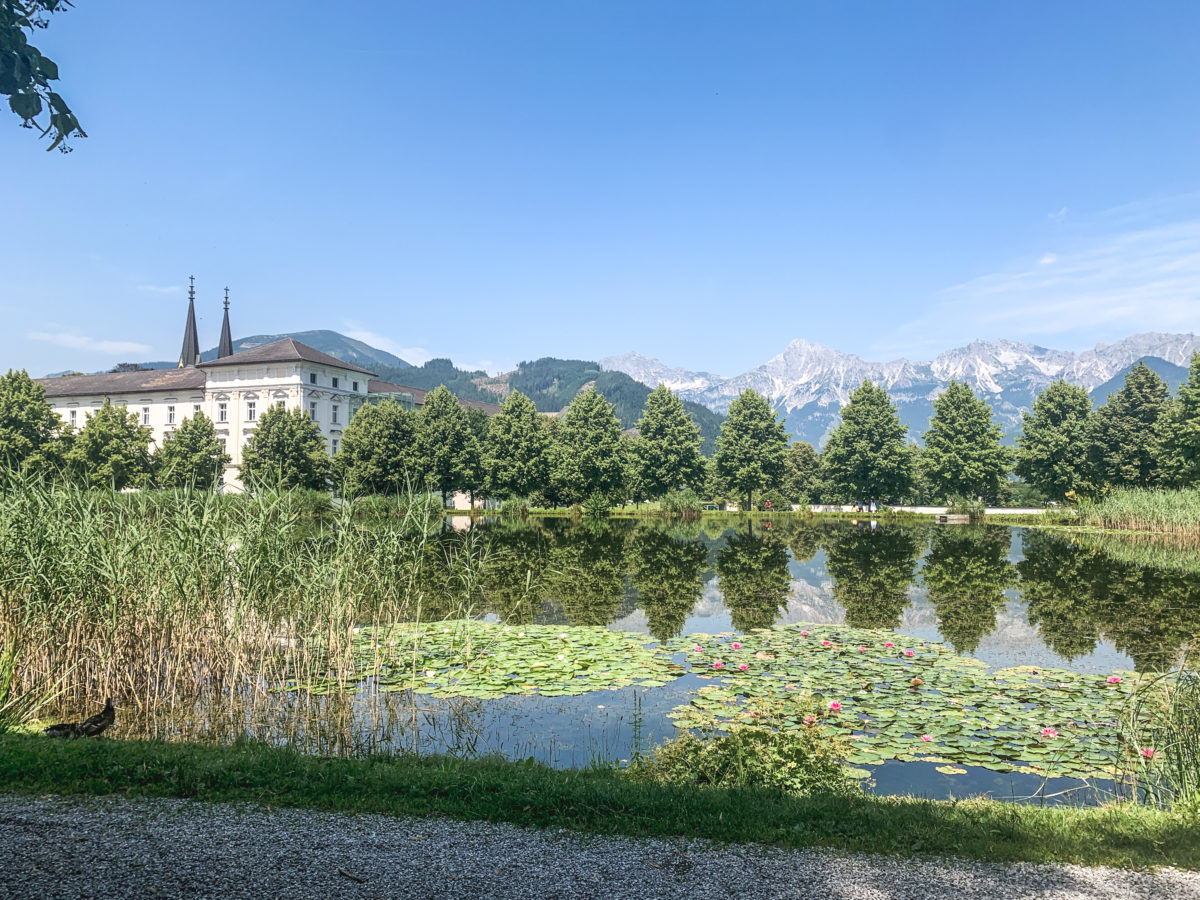
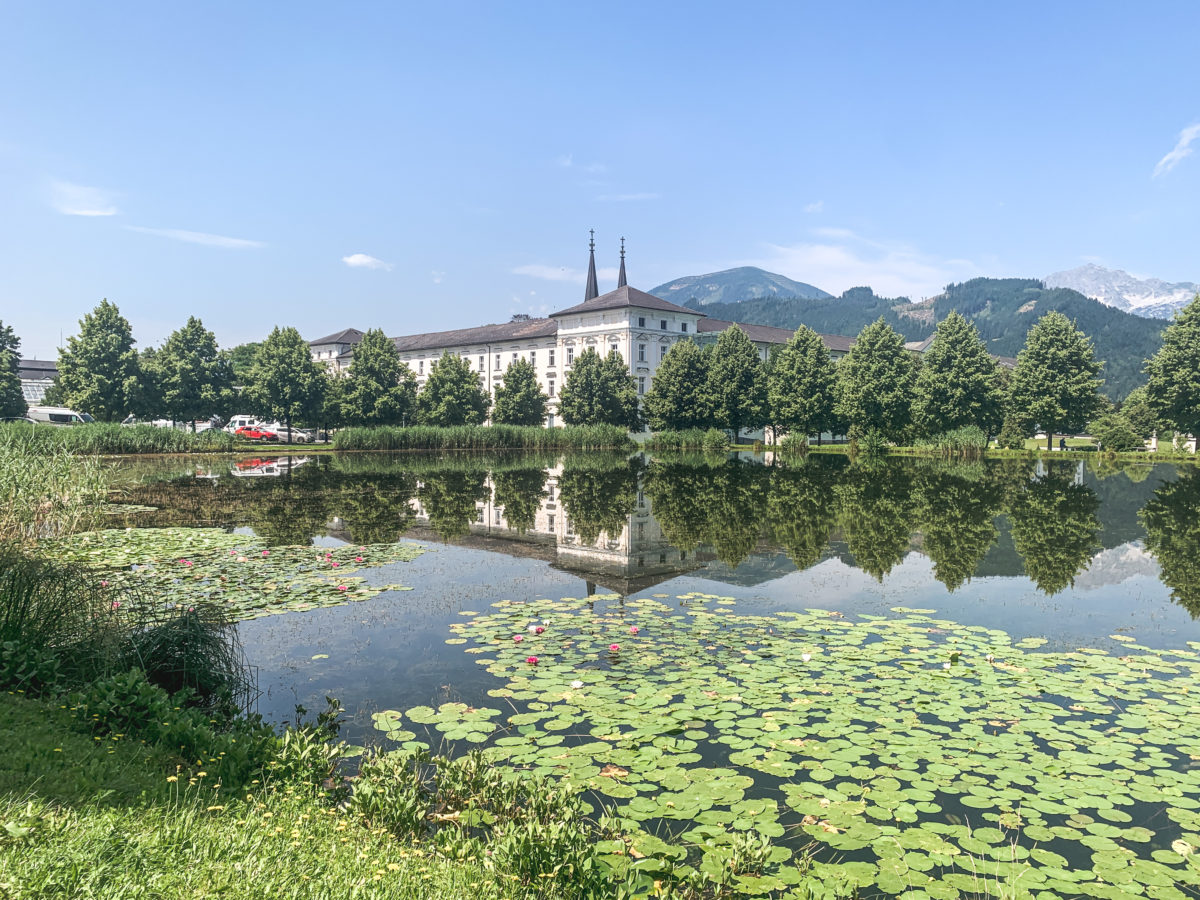
How to get to the abbey
As mentioned before, Admont is a small rural town in central Austria, more specifically in the state of Styria.
As I travel by train and public transport, I recommend downloading the OBB app or visiting the website to check the timetable and connections. It took me a little over 2 hours and 15 minutes to get to Admont from Graz. I took the train at 7:45 on a sunny Saturday morning in July and changed at Liezen before taking the 910 bus. This is the easiest and cheapest connection, with only one change. You can buy tickets directly on the app, which is very convenient.

You can also get to Admont by car as the abbey has a large car park.
Did you know about this Austrian hidden treasure?


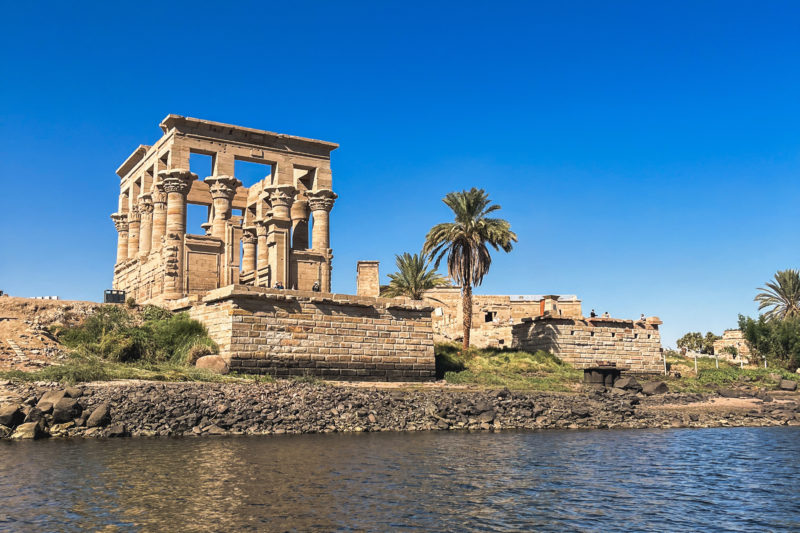


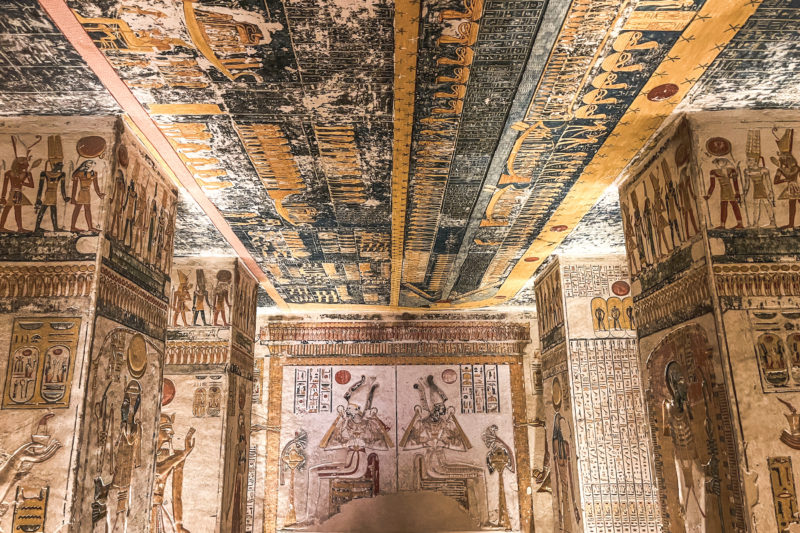
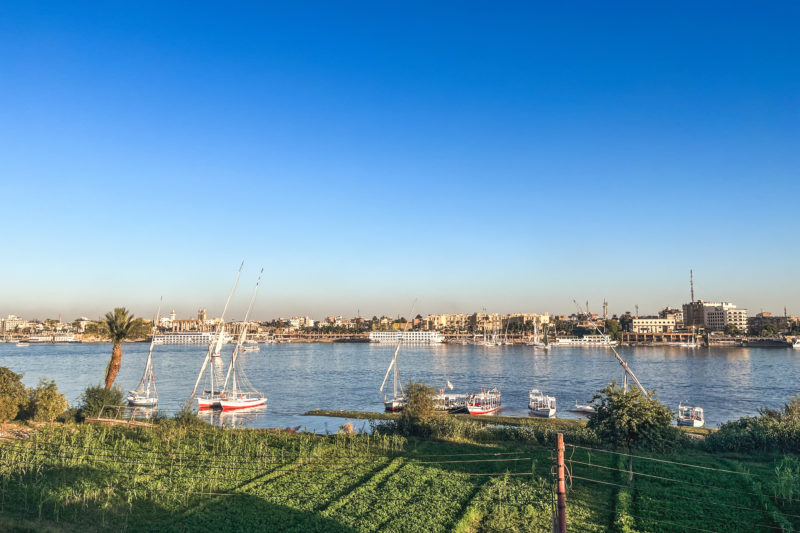
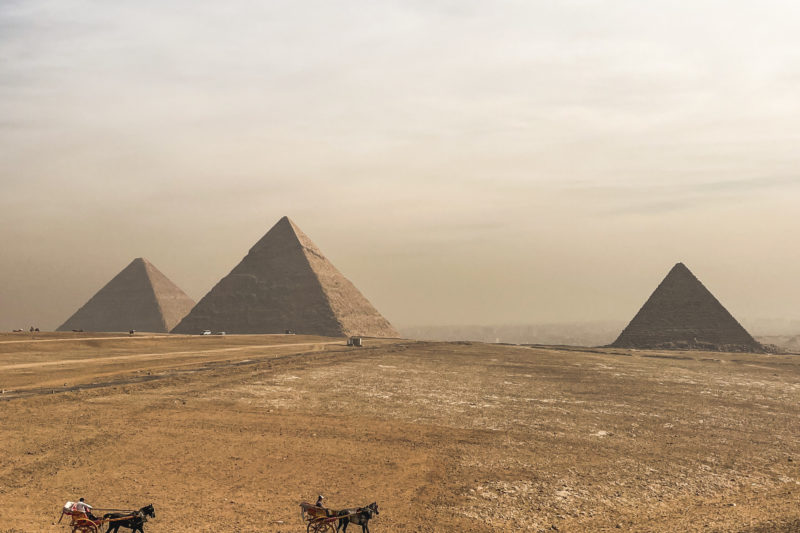
I just love reading your articles, it helps me practice my english and plus, gives me the impression to be travelling with you! Great, keep up writing! Great pictures as well.
You are very talented.
Greetings, Jeanette
So nice to read your lovely comment, Jeanette 😉
Hope you will once see that beauty in Austria!